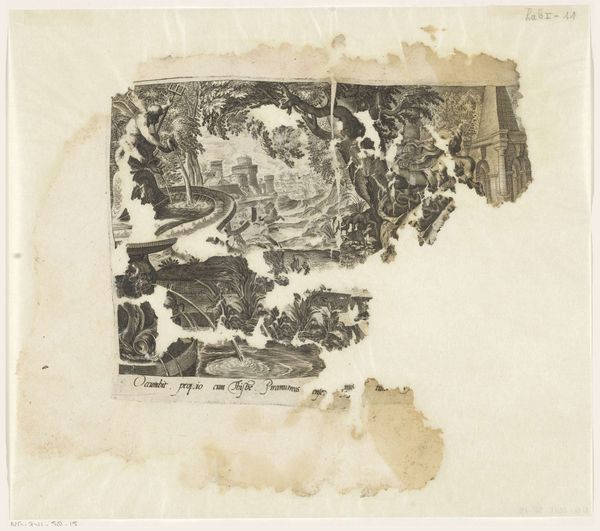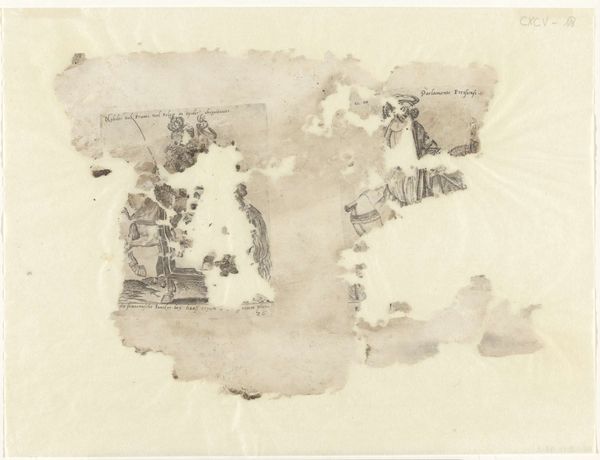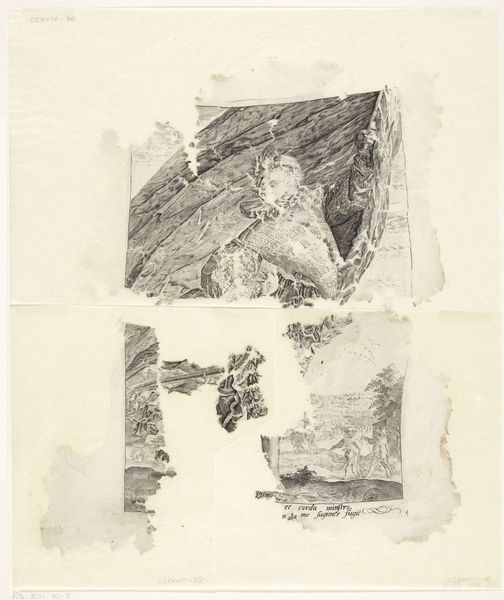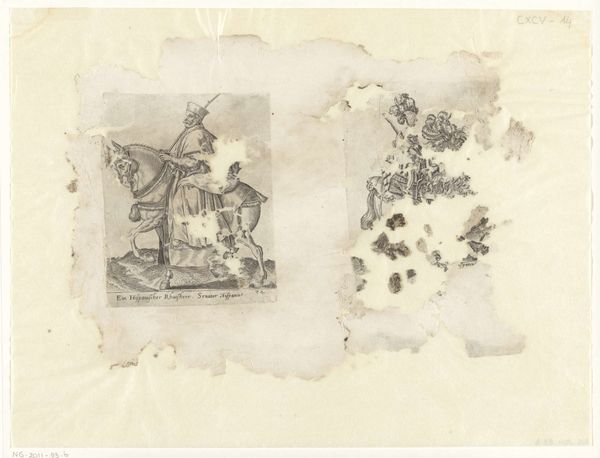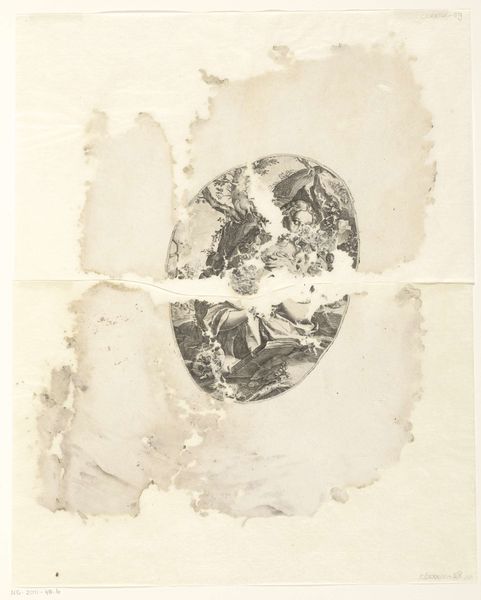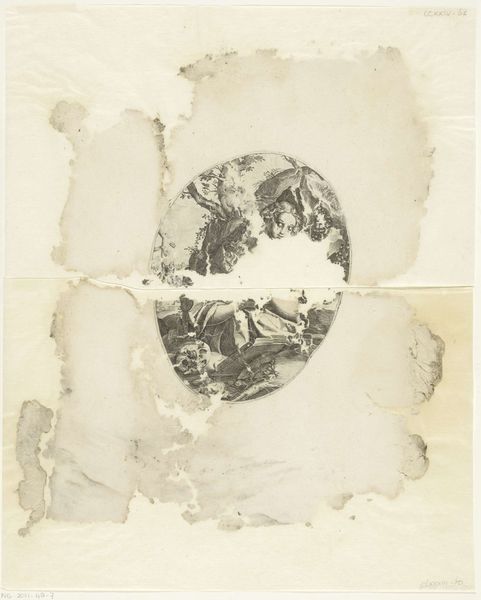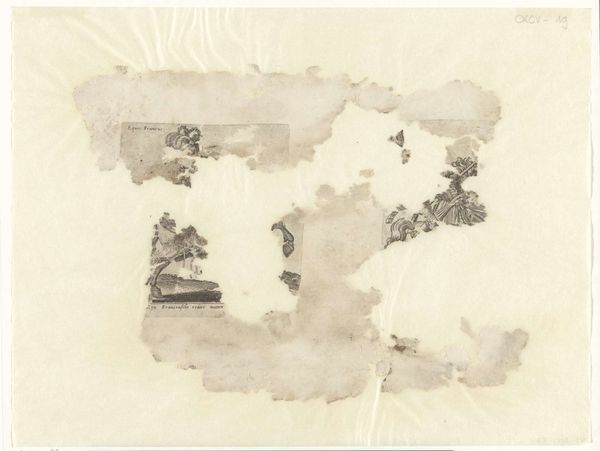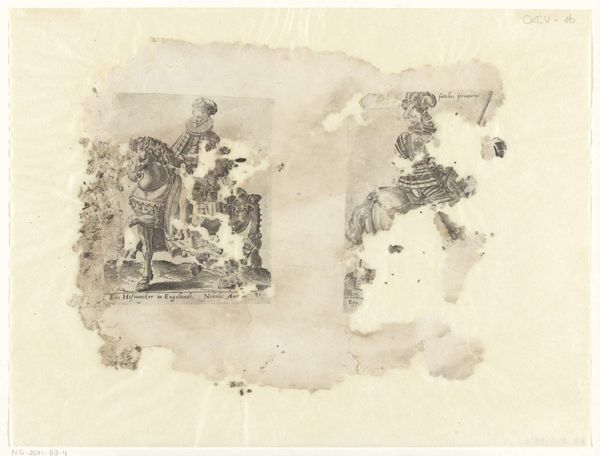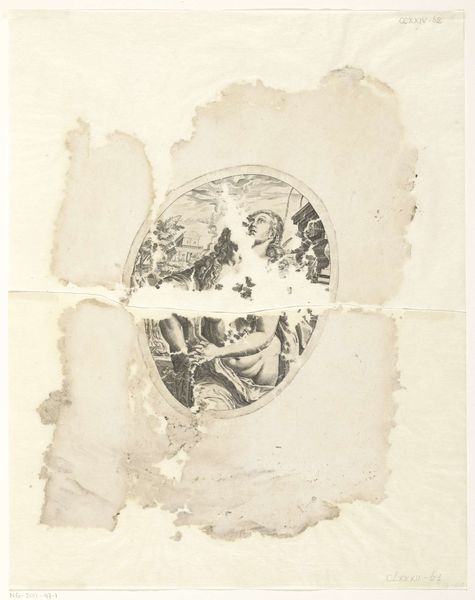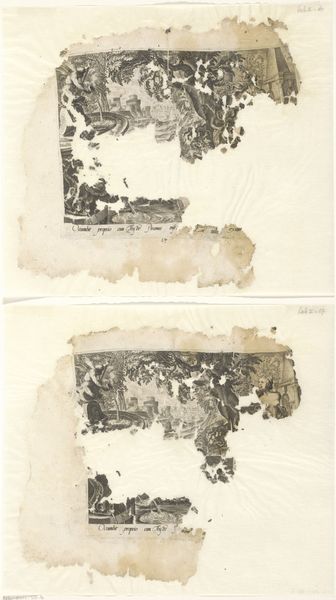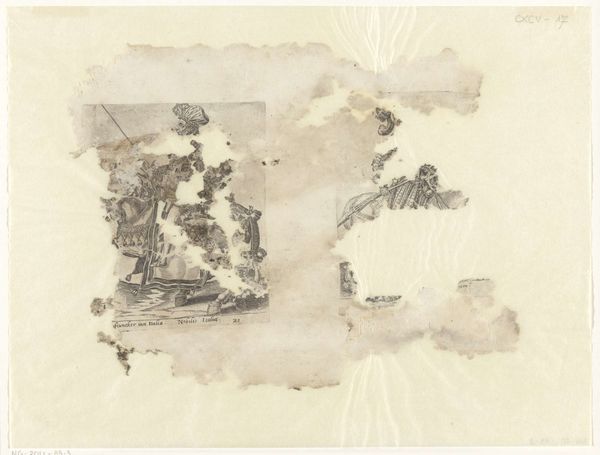
drawing, print, paper, ink, engraving
#
drawing
#
narrative-art
# print
#
landscape
#
mannerism
#
figuration
#
paper
#
ink
#
history-painting
#
engraving
Dimensions: height 252 mm, width 345 mm
Copyright: Rijks Museum: Open Domain
Editor: This drawing, "Pyramus and Thisbe," is attributed to an anonymous artist from around 1580-1596. It's an engraving in ink on paper. It depicts different stages of the story. What really strikes me is how fragmented the landscape feels. What’s your take on it? Curator: Considering its age, the very material fragility of this work speaks volumes. It's not just a drawing; it’s a document of labor, a commodity produced within a specific artistic and economic context. We should be asking, where did the paper come from, who made the ink, and how did this print circulate? These elements affected the very process and what it means today. Editor: That makes sense. But I guess I'm wondering about its story more directly; do you see it as particularly conventional? Curator: Convention is less important to me than the means of production and what was accessible to the artist. It invites us to examine the skills involved in engraving and the role of printmaking in disseminating classical narratives to a wider audience. These copies facilitated a form of cultural capital. And considering its damage and decay, it now acts as material record, it's got more character than something fresh off the press. Editor: That's a really interesting way to look at it! So, you are saying it represents both the labor of its creation and its life through handling? Curator: Precisely! Its physical state is integral to its meaning. The image itself shows classical themes, yes, but our image's cultural significance and importance comes from its material journey. It gives a sense of both a maker's and the user's involvement. Editor: Thanks for your perspective. I'm looking at it differently now. Curator: That’s great. Analyzing the material components and conditions can be a powerful tool in art history.
Comments
No comments
Be the first to comment and join the conversation on the ultimate creative platform.
